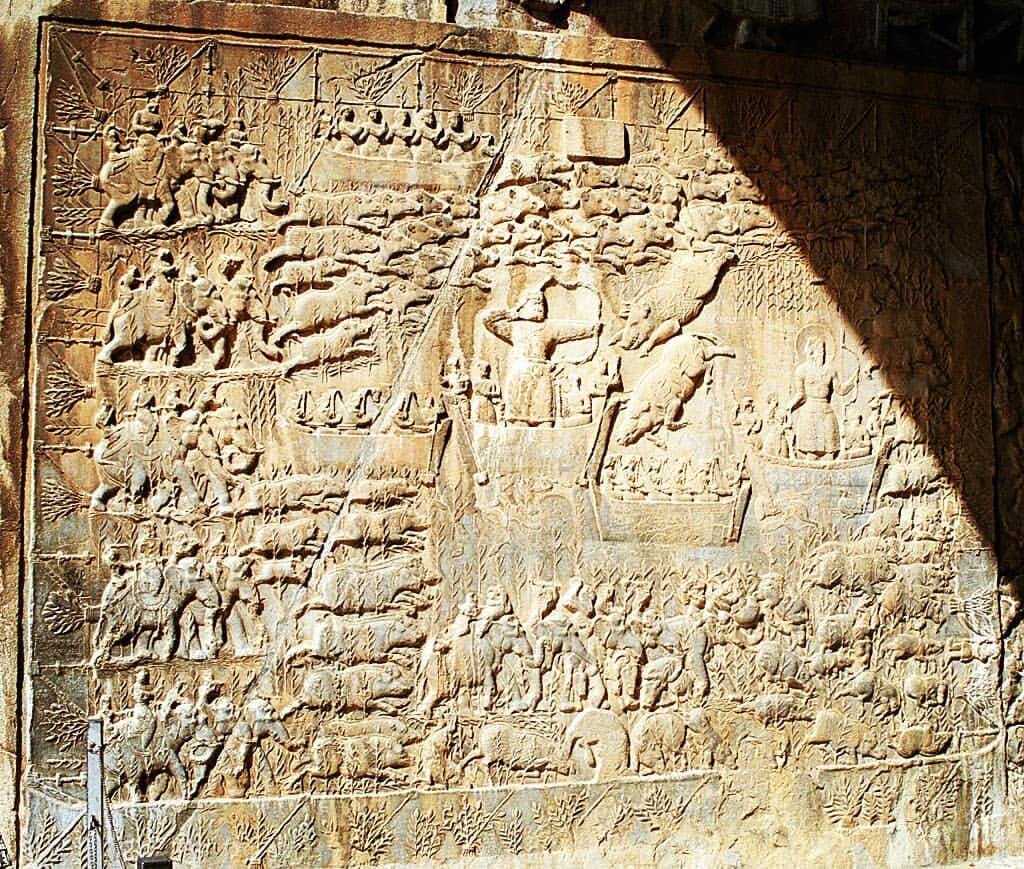Bisotun and Taq-e Bostan

Bisotun and Taq-e Bostan are two historical sites located near each other in the Kermanshah Province. Rock reliefs and the statue of Hercules are fascinating remnants of Bisotun, as is the prehistoric “hunter’s cave” said to have been inhabited 40,000 years ago. Rock reliefs are also under the archway of Taq-e Bostan, the most notable image of which depicts the last king of the Sassanid Empire with Ahura Mazda (the creator in Zoroastrianism) and Anahita (a Zoroastrian diety).
Bisotun Inscription is the greatest inscription in the world, the first known Iranian text and a relief from Achaemenid era (520 years BC.) located in Bistoon City, a suburb of Harsin City, 30 kilometers from Kermanshah and on the outskirts of Bistoon Mountain. Bistoon Inscription is one of the most important and famous historical documents of the world during the Achaemenid that is a description of the victory of Darius the great over Gaumata and enslavement of rebels.

Major points of Bistoon inscription include: introduction of Darius in his own words, Achaemenid dynasty, restoration of monarchy to Archaemenid, Darius’s governance, death of Cambyses, Gaumata rebellion and his death, rebellion in many lands and their repression, restoration of lands that had refused submission, Darius’s nineteen war victories such as the important and difficult victory over Scythians, establishment of peace and safety in the vast empire, rejection of anti—government outlaw’ claims, warning against lying, defending truth and honesty, praying for the country and its nation, Darius’s thank to Ahouramazda for his help in overcoming opponents and retrieving peace, advice to future kings who will read Bistoon inscription, name of those who supported Darius overcome Gaumata and reference to the publication of inscription throughout the Archeemenid territory in cuneiform and in three languages of Persian, Babylonian and Elamite.

 Taq-e Bostan" width="1134" height="726" srcset="https://iranparadise.com/wp-content/uploads/2019/02/Bisotun-and-Taq-e-Bostan-sh.jpg 1134w, https://iranparadise.com/wp-content/uploads/2019/02/Bisotun-and-Taq-e-Bostan-sh-768x491.jpg 768w" sizes="(max-width: 1134px) 100vw, 1134px" />
Taq-e Bostan" width="1134" height="726" srcset="https://iranparadise.com/wp-content/uploads/2019/02/Bisotun-and-Taq-e-Bostan-sh.jpg 1134w, https://iranparadise.com/wp-content/uploads/2019/02/Bisotun-and-Taq-e-Bostan-sh-768x491.jpg 768w" sizes="(max-width: 1134px) 100vw, 1134px" />The scholarly attention given to the Taq-e Bostan rock-cut reliefs has resulted in the neglect of other evidence from the surrounding area. During a visit by the authors to the environs of Taq-e Bostan, we were able to record a number of stone blocks, including their size and the traces of cutting and finishing on their surfaces. In both respects, the blocks from Taq-e Bostan resemble those from Bisotun, a site of historical date, around 30km to the east, where the authors have extensive field experience. Covering an area 600m in diameter, the Taq-e Bostan site lies nearly 500m east of the rock-cut reliefs. Several hewn stone blocks are visible, closely resembling those observed on the slopes of Mount Bisotun in both their dimensions and the cutting technique used. There are also other examples that bear cutting and trimming marks, such as triangular grooves, that closely resemble those attested on blocks at Bisotun and Kangavar, and at the Chaghay quarry in Nahavand (Rahbar & Alibaigi 2012); this clearly indicates that a similar tool was used to remove blocks at Taq-e Bostan. The quarries at Bisotun and Kangavar also yielded the remains of half-finished column bases and drums, although no similar blocks were observed during our visit to Taq-e Bostan


